Understanding Mint Marks on Coins: How They Affect Coin Value
For investors and collectors, the details of a gold or silver coin matters—from its metal composition to its history, are significant. The smallest detail regarding a coin's value becomes its mint mark. Brands like the Austrian Mint, with a reputation...
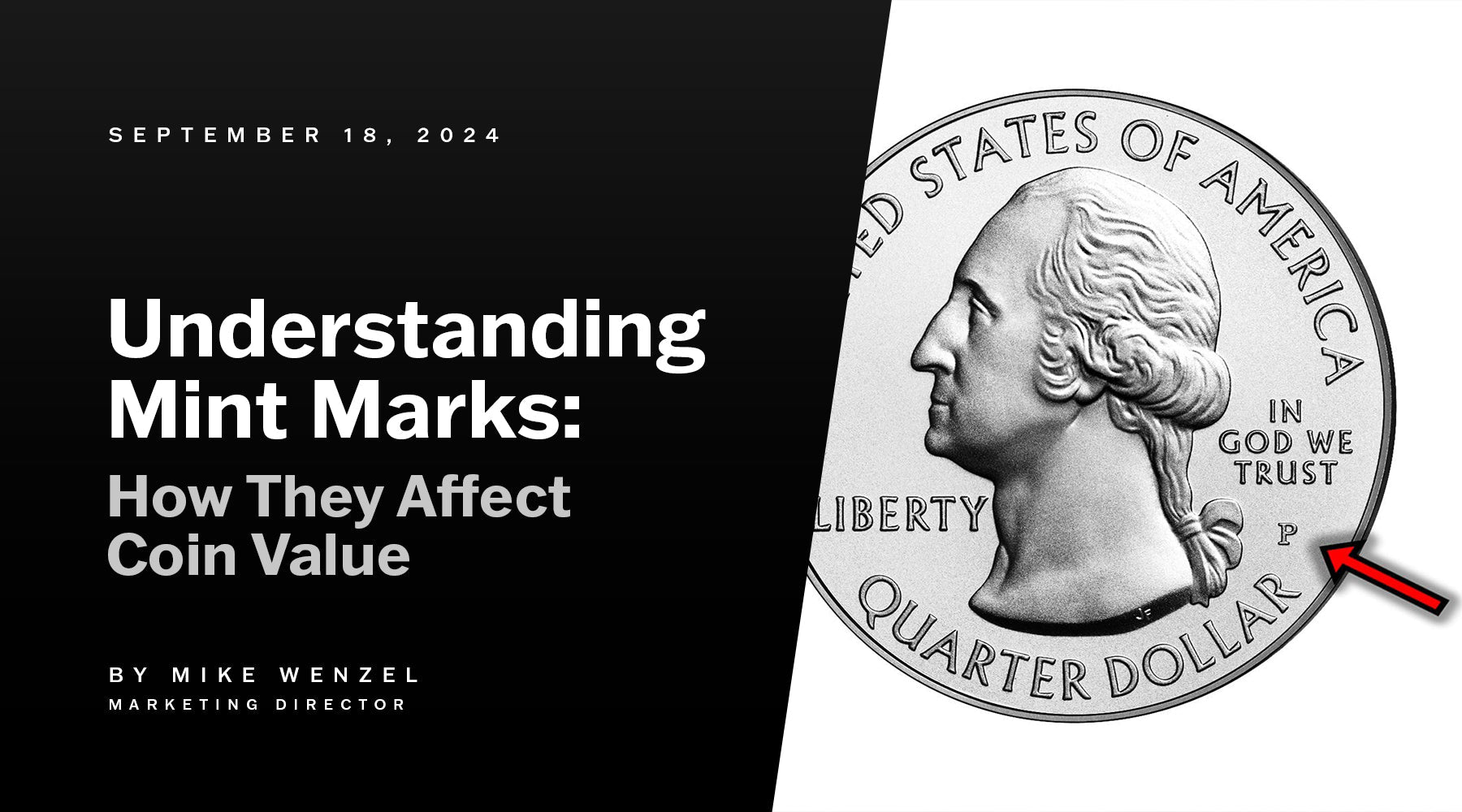
For investors and collectors, the details of a gold or silver coin matters—from its metal composition to its history, are significant. The smallest detail regarding a coin's value becomes its mint mark. Brands like the Austrian Mint, with a reputation for coins such as the Gold Philharmonic and even the Perth Mint, have been operating since 1899, refining gold and stamping the same quality coins appreciated across borders.
But what is the rarest mint mark on a coin? Does it really impact a coin's value? In this post, we’ll talk in detail about it, its importance, and why savvy collectors should pay attention to these small yet significant facts.
What Is a Mint Mark?
It is a small letter or symbol stamped on a coin to indicate where it was minted. In the U.S., coins are produced at several different mints, each with its unique identifier, which can greatly influence a coin’s rarity, desirability, and, ultimately, its value. The major U.S. mints include:
-
Philadelphia (P): It is one of the oldest and largest coins that often strike the most coins, meaning “P” mint mark coins are more common.
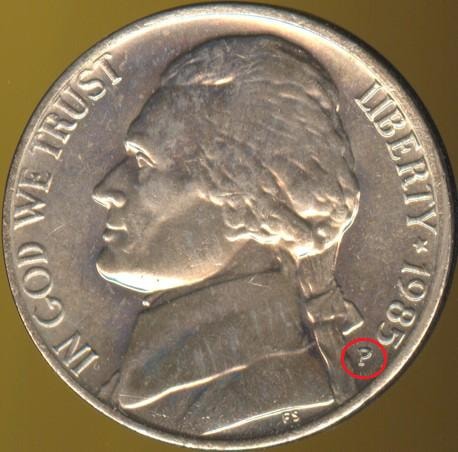
-
Denver (D): This is popular for producing many coins in circulation today.
-
San Francisco (S): It has an extensive record of creating proof coins, which collectors highly sought after.
-
West Point (W): Investors are especially interested in it since it excels in minting bullion coins, mainly gold and silver.
Other reputable mints include the Royal Canadian Mint, known for its Silver Maple Leaf coins, and private mints like PAMP Suisse, renowned for their high-quality silver products.
History of Mint Marks
Mint marks have been used for a very long time, starting in ancient Greece and Rome. They were added to coins to show where they were made. These marks helped people trust that the coins were real and of good quality.
In the United States, it started in 1835 after the Coinage Act 1835 was passed. The Philadelphia Mint, the first mint in the U.S., used to identify its coins. At first, coins from Philadelphia didn’t have it because they were the only mint at the time. This changed when more mints opened.
By 1838, mints in Charlotte, Dahlonega, and New Orleans began using mint marks to show where their coins came from. Each mint used a unique letter: C for Charlotte, D for Dahlonega, and O for New Orleans. This made it easier to track where coins were made.
Over time, it became more common as new mints were built. Today, they are vital for coin collectors. Coins with certainty can be rare and more valuable. It also helps prevent fake coins by proving where and when a coin was made.
Major Mints and Their Marks
The United States has several important mints, each using its unique mark to show where coins are made. These mints have created many coins, including silver, gold, and special commemorative coins. Here are the major mints and their marks:
-
Philadelphia Mint (P): This is the oldest and biggest U.S. mint. It produces the most coins, so coins with the "P" mark are common.
-
San Francisco Mint (S): Known for making high-quality proof coins, the "S" mark is a favorite among collectors.
-
West Point Mint (W): This mint specializes in bullion coins, making the "W" mark popular with investors.
-
Denver Mint (D): The Denver Mint produces many coins for daily use, and its "D" mark can be found on a wide range of coins.
-
Carson City Mint (CC): Founded in the 1800s, this mint produced fewer coins, making its "CC" mark rare and valuable.
-
New Orleans Mint (O): Opened in 1838, the New Orleans Mint used the "O" mark on many historic coins.
-
Dahlonega Mint (D): Established during the Georgia Gold Rush in 1838, the Dahlonega Mint's "D" mark is only found on gold coins.
-
Charlotte Mint (C): Built during the North Carolina Gold Rush, the Charlotte Mint's "C" mark appears on gold coins from that era.
Collectors often look for coins with specific features, as these can make a coin more valuable or rare. These features are key to understanding a coin's history and worth.
Why Mint Marks Matter
Mint marks might seem like small details, but they can greatly influence a coin's value for several reasons:
-
Rarity : Some mints produce fewer coins, making them rare and more valuable. For example, coins from the Carson City Mint (CC), which had limited operations in the 19th century, are highly sought after because of their small production numbers.
-
Historical Significance : Mint marks connect a coin to its history. Coins from historic or now-closed mints like New Orleans (O) or Carson City (CC) often carry extra value for collectors who appreciate their historical background.
-
Minting Errors : Coins with specific mint marks might have unique minting errors, such as design flaws or misstrikes. These error coins are extremely rare, which makes them highly desirable and increases their worth.
-
Regional Interest : Collectors often seek coins from certain mints due to personal or regional connections. For instance, someone might prefer a gold coin from the West Point Mint because of its reputation for producing high-quality bullion.
-
Unique Designs : Coins with marks from private or smaller mints may feature special designs or limited editions, adding to their appeal and market value.
How Mint Marks Affect Coin Prices
At Global Coin, we know how much it can affect the value of gold and silver coins. Coins with certain marks, like those from Carson City (CC) or West Point (W), are often more valuable because they were made in smaller quantities or at prestigious mints. For example, half dollars of 90% silver can change prices depending on the mint mark and how the market values those coins.
Collectors and investors often look for coins with unique marks, like the "W" from West Point, because it adds rarity and exclusivity, which increases their worth. Mint marks aren’t just small details- they're a big factor in determining a coin’s value.
Notable Proof Coins Where Mint Marks Increase Value
Some coins show how it can make them much more valuable. Here are a few examples:
-
Morgan Silver Dollars (1878-1921): Coins with the "CC" mark from Carson City are highly desired by collectors. Carson City produced fewer coins than other mints, making these coins rarer and more valuable than those from Philadelphia.
-
American Eagle Bullion Coins: Gold and silver American Eagles made at the West Point Mint ("W") are known for their excellent quality. Coins with the "W" mark, especially proof or burnished versions, are popular with collectors and investors.
-
Rare Commemorative Coins: Modern commemorative coins from the San Francisco Mint ("S") are prized for their outstanding quality and limited production. The "S" mint mark adds value for collectors who appreciate the craftsmanship.
Mint marks can greatly affect a coin’s rarity and value!
Authenticating Mint Marks for Smart Investing
For investors, these are interesting details and essential for making smart choices. Ensuring a coin is authentic can protect your investment.
Global Coin provides a range of graded and certified gold and silver coins with verified. This helps you invest with confidence.
We partner with trusted coin grading services like PCGS and NGC to verify it and certify coins. This guarantees authenticity and boosts the coin’s future value, giving you peace of mind while investing.
Identifying Mint Marks
Finding it on coins can be tricky, especially for new collectors. Here are some simple ways to identify them:
-
Check the Coin’s Reverse Side : Most coins have their marks on the back, near the bottom. For instance, Morgan Silver Dollars have the mint mark below the wreath on the reverse.
-
Look at the Coin’s Edge: Some coins, especially commemorative ones, are placed on the edge. This is less common but worth checking.
-
Use a magnifying glass: Mint marks can be tiny and hard to see, especially on older coins where the marks may have faded. A magnifying glass can make them easier to spot.
-
Refer to a Coin Guide : Reference guides list and the mints they represent. These guides are helpful tools for learning about your coin’s origin and history. Collectors can confidently identify and uncover more about their coins’ background and value using these steps.
Counterfeiting and Mint Marks
Mint marks help prevent counterfeit coins by verifying their authenticity. When a mint adds a mark to a coin, it guarantees it is genuine. However, counterfeiters have become skilled at replicating these marks, so collectors must stay alert when buying coins.
There have been recent cases where counterfeiters created fake coins with mint marks that closely resembled those of the United States Mint. Some of these fake coins were so realistic that they fooled even experienced collectors and dealers.
To avoid buying counterfeit coins, collectors should only purchase from trusted dealers. It’s also important to verify the authenticity of the coin before buying. Working with professional coin grading services like PCGS or NGC can help ensure that it is real. These services authenticate and grade coins, offering collectors peace of mind.
Collectors can protect their investments and enjoy collecting with confidence by understanding the role of this and taking steps to verify a coin’s authenticity.
How to Get Started with Mint Mark Coins for Coin Collectors
If you’re new to investing in gold and silver coins, paying attention to mint marks is a smart way to begin. These marks reveal a coin’s rarity and add value for collectors.
Whether you're looking to diversify your investment portfolio or expand your coin collection, starting with coins from well-known mints like West Point or San Francisco can help ensure you're making a sound investment.
At Global Coin, we’re dedicated to helping you navigate the world of precious metals, from understanding it to finding the perfect gold or silver coin for your collection Browse our carefully curated and graded coins and take the next step in building a valuable, diversified investment portfolio.
Final Thoughts
Mint marks may be small but can greatly affect a coin’s value. Knowing the origin of your gold and silver coins allows you to make better decisions that could lead to higher returns. Whether you're after rare collectible coins or bullion for investment, it plays a key role in boosting value.
Whether you’re looking for rare collectible coins or bullion for investment, mint marks are critical to maximizing value.
Ready to add high-quality gold and silver coins to your collection? Explore the selection at Global Coin today and start making the most of your investment journey!

Q&A: Everything You Need to Know
What is a mint mark on a penny, and where can I find it on a coin?
It is a small letter or symbol on a coin that shows where it was made. You can usually find it on the reverse (back) side of the coin, although its location can vary depending on the coin's series and the time it was produced.
How does it affect the value of a coin?
Mint marks can greatly affect a coin's value. Coins made at mints with lower production numbers, like the Carson City or San Francisco mints, are rarer and more valuable. Mints like West Point are known for producing high-quality coins, which can increase both collectible and investment value.
Why do some coins not have a mint mark?
Coins without a mark were mostly made at the Philadelphia Mint, which did not use it on most of its coins until recently. If there’s no mark, especially on older coins, it likely means they were produced in Philadelphia.
What are some of the most valuable to look for?
Valuable U.S. mint marks include "CC" for Carson City, known for its low production and high value, "S" for San Francisco, especially for proof coins, and "W" for West Point, often seen on modern bullion and commemorative coins.
Does it matter for bullion coins, or are they only important for collectible coins?
Mint marks matter for both bullion and collectible coins. For bullion coins, it like "W" (West Point) indicates higher quality, which can increase value over time. This shows the rarity and historical importance of collectible coins, which are crucial for determining value.
What should I consider when buying coins?
When buying coins, consider the mint mark’s rarity, demand, and historical value. Always ensure the coin has been authenticated and graded by a trusted grading service to protect your investment.
How can I verify the authenticity of a coin's?
To verify a coin’s authenticity, buy certified and graded coins by professional services like PCGS or NGC. These organizations authenticate and grade coins to ensure that it is real, which is important for collectors and investors.
Global Coin offers a wide range of certified and graded coins with clear mint mark identification to help you make informed investment decisions.
Related Articles
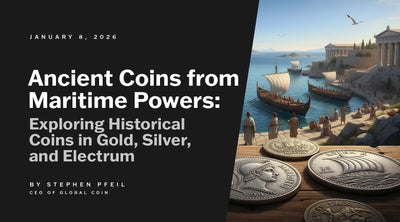
Ancient Coins from Maritime Powers: Exploring Historical Coins in Gold, Silver, and Electrum
The invention of coinage transformed the ancient world by facilitating trade. Coins were invented...
Discover More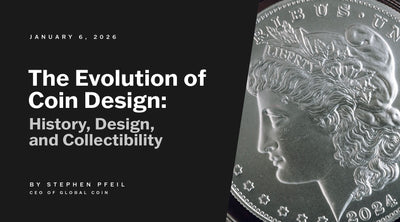
The Evolution of Coin Design: History, Design, and Collectibility
In today’s world of digital transactions, physical coins and other forms of currency remain timel...
Discover More
Investing in Gold Coins With Unusual Weight Variants
Disclaimer: Global Coin is a dealer of precious metal coins and does not provide investment, fina...
Discover More

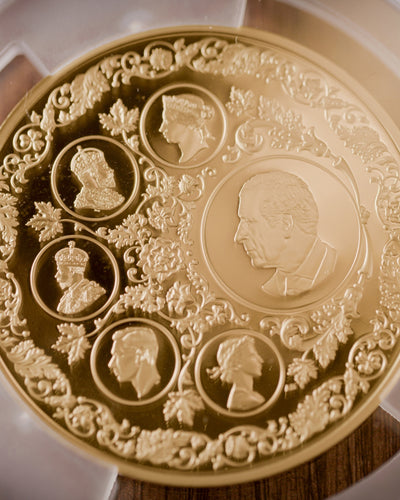
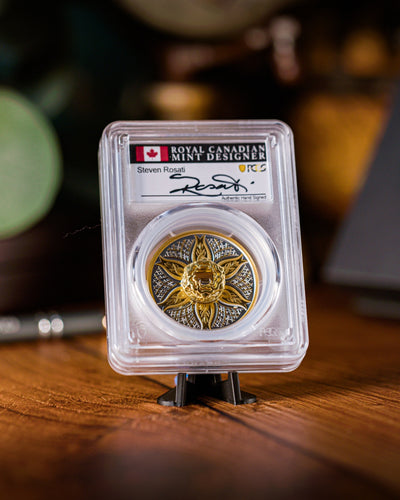
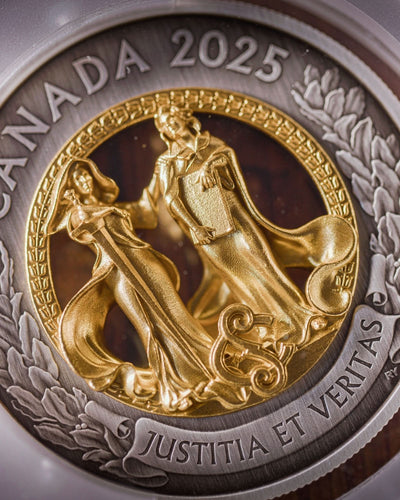
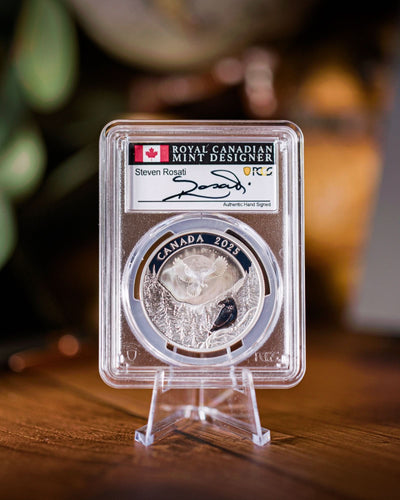
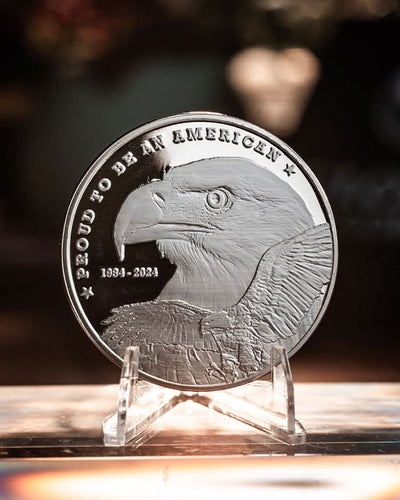
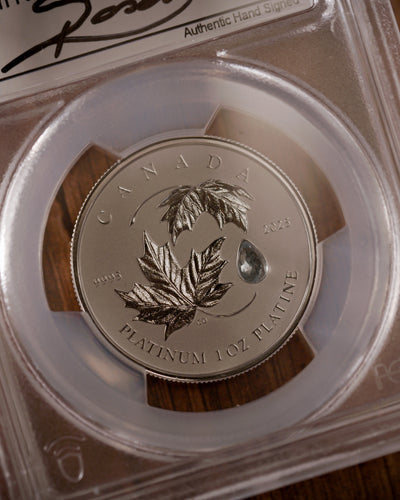
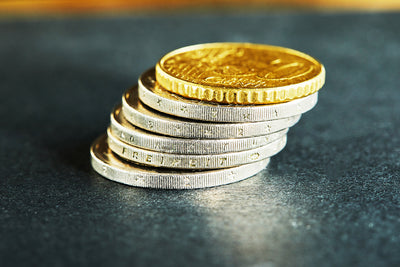
7 comments
I have in my collection in hand some of the pennies mentioned on the site with no mint dates 77 60 64 and 6 others where and what can I fo to get them evaluated
Anthony Huerta
Again these 9pennies are older pennies from 60s and 70s one from 1983
Anthony Huerta
I have a 1971 Eisenhower dollar with a sample mint mark on it, is this the rare one everyone is looking for?
Richard C Coleman
Please can you tell me where I can obtain picture images of faults to look for. I don’t have anything to check from.
Thank you
Freda Dean
Coins should not be polished they lose their value
Enrique Garza
i have coins with mint mak and when it polish it i see a precious metal inside. i identify rose gold if i’ve mo istake. 2008 nickel D mintmark. and also RM mint mark ok ng others side.
Eloy III Mendoza
i have a lincoln penny with the 200sf marking on it.IS IT LEGIT.
peterconnolly
Leave a comment
This site is protected by hCaptcha and the hCaptcha Privacy Policy and Terms of Service apply.